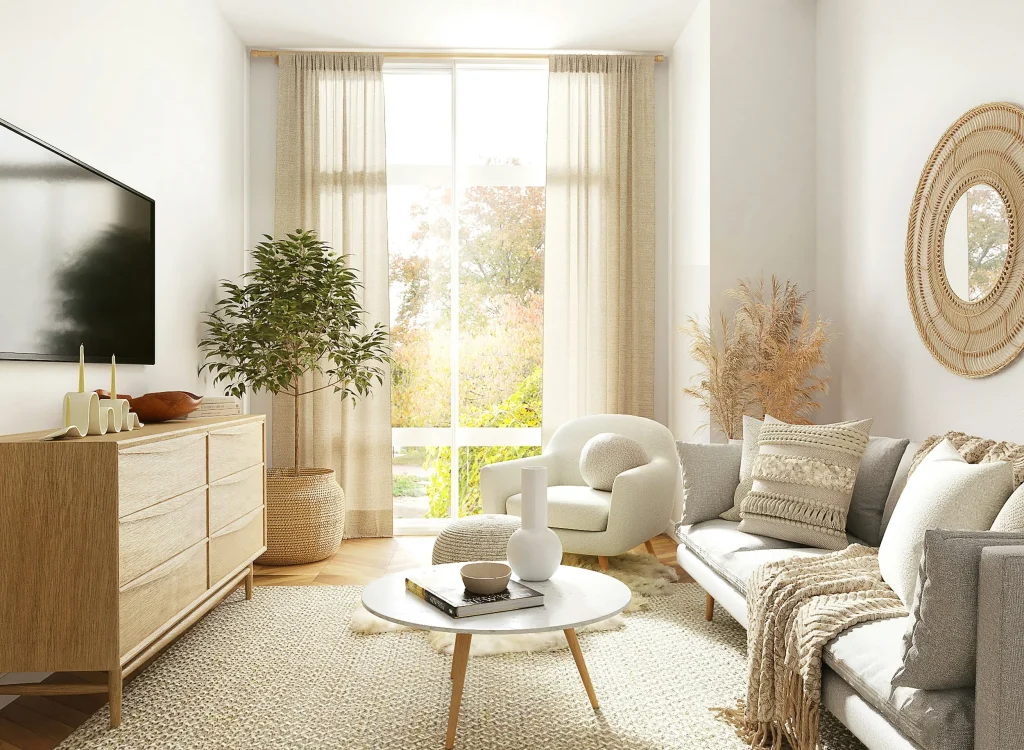Intentionality in Space Selection: Creating Minimalist Environments that Reflect Your Values

Understanding the Importance of Intentional Space Selection
Amidst the chaos of daily life, the spaces we inhabit profoundly shape our experiences. Intentionality in space selection is not merely about aesthetics; it is about crafting environments that resonate with our fundamental values. This thoughtful curation can lead to transformative experiences, inviting us to reflect on what is genuinely important in our lives. For instance, a clutter-free workspace can boost productivity by reducing distractions, while a serene home environment can enhance relaxation and emotional well-being. By adopting a minimalist approach, we can enhance clarity and foster personal growth, allowing us to focus on what truly matters.
Key Principles of Creating Minimalist Environments
Minimalism encourages us to curate our surroundings with purpose and intention. It’s about selecting elements that align with who we are and what we cherish. Here are some principles to guide your journey:
- Functionality: Choose items that serve a clear purpose. For example, instead of filling your living room with decorative objects that only collect dust, opt for functional furniture like a stylish coffee table that also offers storage. This ensures that every piece in your space supports your lifestyle.
- Clarity: Maintain open spaces that foster mental clarity. Consider the layout of your living area; leaving pathways free of obstacles creates a sense of flow, allowing for easier movement and a more peaceful atmosphere. An uncluttered workspace can enhance focus and creativity, making it essential to declutter regularly.
- Value Alignment: Select colors, designs, and textures that reflect your personal philosophy. For instance, if environmental sustainability is important to you, consider incorporating natural materials like bamboo or reclaimed wood. These choices not only add warmth and character to your space but also demonstrate a commitment to eco-friendly living.
By intentionally selecting our environments, we create spaces that not only look good but also nurture our mental well-being. These principles become particularly relevant in our fast-paced world where distractions abound. As we dive deeper into this exploration, we will unveil how intentional design can be a powerful tool for personal transformation and fulfillment.
Discovering Minimalism’s Impact on Your Life
In the United States, where consumer culture often dominates, practicing minimalism offers a refreshing alternative. It invites a thoughtful examination of what truly matters to us. Research has shown that individuals who adopt minimalist lifestyles experience decreased stress and increased life satisfaction. For example, a national survey conducted by the American Psychological Association highlights that environments rich in mindfulness-promoting elements lead to improved mental health outcomes.
Join us as we uncover strategies to reshape your spaces into authentic reflections of your values. This journey may involve decluttering items that no longer serve you, choosing multifunctional furniture, or even incorporating greenery that promotes serenity and connection to nature. By making deliberate choices about our environments, we empower ourselves to live more intentional and fulfilling lives, aligning our physical surroundings with our inner principles.

DISCOVER MORE: Click here to learn about finding balance
Transforming Your Environment: The Role of Intentionality
The journey towards a minimalist lifestyle begins with a conscious decision to reshape our environments in ways that are meaningful and reflective of personal values. In a world marked by constant consumerism, intentional space selection serves as a powerful antidote, prompting us to prioritize quality over quantity. When we approach our living spaces with purpose, we create not only aesthetic beauty but also functional areas that enhance our overall well-being.
Understanding the implications of our choices is key. According to a study from the University of California, Berkeley, individuals who engage in mindful practices, such as the selection of their environments based on their values, report a significant increase in their sense of happiness and connection with their surroundings. This highlights the profound impact that our spaces can have on our mental and emotional states.
Strategies to Enhance Your Space Intentionally
Creating a minimalist environment that resonates with your values involves several strategic approaches. Here are some actionable strategies to guide your transformation:
- Declutter with Purpose: Begin by evaluating your belongings. Ask yourself if each item serves a purpose or brings joy. If it doesn’t, consider donating or recycling it. This process clears not just physical space but also mental clutter, allowing for greater focus on what is truly essential.
- Invest in Quality Pieces: Rather than filling your home with numerous items, focus on acquiring a few quality pieces that embody your values. For instance, purchasing sustainably-made furniture not only supports ethical companies but also promotes a sense of responsibility towards the environment.
- Incorporate Personal Touches: Include artwork, photographs, or decor that reflects your journey and passions. These personal touches serve as reminders of your values, enhancing your emotional connection to your space and transforming it into a sanctuary of authenticity.
Each of these strategies emphasizes the importance of intentionality in space selection, fostering a lifestyle that aligns with your core beliefs. This reflection on your possessions and their meanings provides clarity and focus, enabling you to live a life that is not only aesthetically pleasing but also deeply fulfilling.
The shift towards minimalism is not merely a trend; it is a lifestyle choice that encourages resilience and intentionality. As we delve deeper into this exploration, we will uncover not only the emotional benefits but also the tangible outcomes of creating spaces that truly reflect who we are at our core. Join us on this transformative journey where every element of your environment works harmoniously to embody your values.
| Advantages | Description |
|---|---|
| Enhanced Focus | A minimalist environment reduces distractions, paving the way for clearer thoughts and improved productivity. |
| Value Alignment | Crafting spaces that echo your values reinforces your commitment to a purpose-driven life, enriching emotional well-being. |
In exploring the concept of intentionality in space selection, we delve into how creating minimalist environments can profoundly influence our day-to-day experiences. The focus shifts towards how simplified spaces serve not only aesthetic values but significantly enhance our mental clarity and overall productivity. Consider how a decluttered workspace allows for enhanced focus, minimizing the incessant pull of distractions. When we intentionally curate our surroundings, we foster an atmosphere conducive to creativity and mindful engagement.Moreover, when our spaces reflect our fundamental values—be it sustainability, mindfulness, or community—we anchor ourselves in a lifestyle that resonates deeply. Living and working in environments that directly align with our goals and ideals creates a fulfilling sense of purpose. As you reflect on your space, ponder how intentional design can not only beautify but also enrich your life. Discover more about crafting your ideal minimalist haven and the transformative power it holds.
DISCOVER MORE: Click here to learn how to create a harmonious home
Enhancing Well-Being Through Thoughtful Design
As we navigate the intricate relationship between our environments and our inner selves, it becomes essential to recognize how intentional space selection can significantly uplift our daily experiences. The act of designing a minimalist environment with careful consideration not only speaks volumes about personal values but also fosters a deeper sense of well-being. Research highlights that the tranquility found in minimalist spaces can reduce stress and anxiety levels, creating a sanctuary conducive to mindfulness and productivity.
Spatial Arrangement and Flow
The arrangement of your space is just as impactful as the items it contains. Thoughtful layout choices can facilitate smoother transitions and foster a sense of harmony. For instance, keeping pathways clear and furniture arranged to encourage natural movement contributes to an environment that feels open and inviting. Consider the principles of Feng Shui, which emphasize energy flow, to create spaces that resonate positively. By strategically placing furniture and decorative elements, you can craft areas that stimulate energy and clarity, enhancing your mindfulness practices.
Utilizing Natural Elements
Bringing the outdoors inside is another powerful method to create minimalist environments that reflect your values. Numerous studies indicate that incorporating natural elements—such as plants, natural light, and organic materials—can boost mood and improve cognitive function. By adding greenery, you not only improve air quality but also create a living connection to nature, prompting feelings of peace and restoration. Choose low-maintenance plants like succulents or peace lilies, as they align well with a minimalist ethos while providing aesthetic appeal.
Technology and Minimalism
In a digital age, managing technology in our spaces becomes a crucial facet of intentional space selection. Minimalist design encourages a measured approach to technology, promoting the idea of digital wellness. Ensure that electronics serve a purpose rather than dominate your environment. For example, consider employing concealed storage solutions to hide unsightly cords and devices, allowing the natural beauty of the space to shine through. Embrace smart technology that consolidates function while minimizing physical clutter, such as multifunctional devices that streamline daily tasks without overwhelming your aesthetic vision.
Color and Texture as Expressions of Values
The colors and textures chosen for your space profoundly influence its atmosphere. Soft, neutral tones can elicit feelings of calm, while bolder colors might reflect creativity and vibrancy. Selecting colors that resonate with your personal values encourages an emotional connection to your surroundings. Textures, too, play an essential role in creating a sensory experience that supports mindfulness. Using sustainable materials, such as reclaimed wood or ethically sourced fabrics, not only enhances the tactile appeal but also aligns your space with ethical living principles.
This emphasis on intentionality in space selection fortifies the belief that our environments can become extensions of ourselves. By embracing strategies that prioritize well-being, functionality, and personal values, we can cultivate living spaces that nurture not just our physical needs but also our emotional and spiritual aspirations. As we evolve in our understanding of minimalism, it becomes clear that every corner of our homes can serve as a testament to the values we cherish most.
DISCOVER MORE: Click here to learn how to involve your family in decluttering
Conclusion: The Power of Intentionality in Our Spaces
In our pursuit of minimalist environments that resonate with our personal values, the significance of intentionality in space selection cannot be overstated. This deliberate approach allows us to transform our living spaces into more than just physical locations; they evolve into reflections of who we are and what we hold dear. As we explore the profound relationship between our surroundings and mental well-being, it becomes evident that a thoughtfully designed space can reduce stress, enhance focus, and promote a sense of harmony.
By carefully arranging furniture for optimal flow, integrating natural elements for a rejuvenating atmosphere, and managing technology to support rather than overwhelm, we create environments that nurture our emotional and spiritual needs. The choices we make regarding color, texture, and sustainability further express our values and beliefs, fostering a deeper connection to our environments. Ultimately, every selection, whether big or small, contributes to a holistic sense of well-being.
As you reflect on your own space, consider how you can implement these principles to create an oasis that is not just aesthetically pleasing, but also profoundly meaningful. Embracing intentionality in design empowers us to craft spaces that nurture our growth and align with our values. In doing so, we invite a more mindful existence, where our homes truly become a sanctuary that inspires and uplifts. The journey towards minimalism and intentional living is not just about decluttering, but about enriching our lives through the spaces we inhabit.


